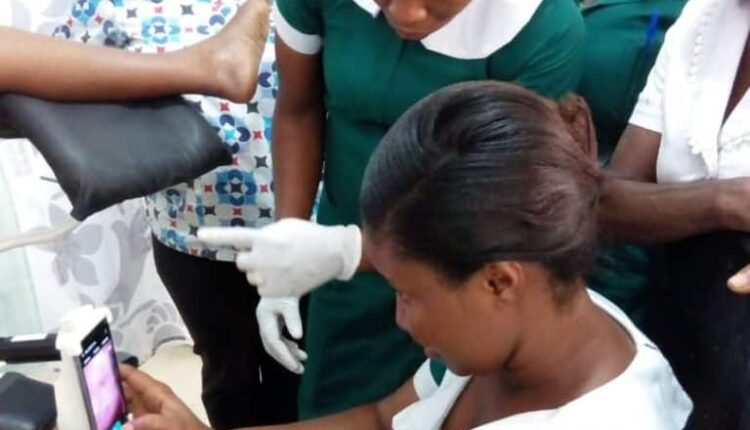“The secret to change is to focus all of your energy not on fighting the old but building the new.”- Socrates.

In June 2016, in Catholic Hospital Battor, we made an important decision. We switched from using cytology (pap smear) as our primary screening method for cervical precancer to HPV DNA testing. It was an important decision. For low income countries and settings like Battor, it is difficult to run large scale screening by cytology. We didn’t have cytotechnologists and pathologists in-house to read our pap smears for us. We had to send samples to Accra. The learning curve for cytology (to train somebody to read pap smears) is long. HPV DNA testing was attractive because of the short learning curve for the laboratory technicians. It is also more sensitive than cytology making it more suitable for a largely unscreened population like ours where women are not likely to get screened many times in their lives.
Switching from cytology to HPV DNA testing allowed in-house cervical precancer screening, follow up and treatment of precancerous lesions of the cervix. It was not a sudden event for us. It was preceded by many months of planning with the possibility to replicate it across the country. Algorithms were developed to standardise care, nurses were trained to perform colposcopy with a mobile colposcope, the Enhanced Visual Assessment (EVA) system, produced by MobileODT, Israel. We put in a monthly quality assurance meeting, where all positive cases would be reviewed with a gynaecologist in attendance.
Before the switch, with cytology as the primary screening method, I performed colposcopy for all the screen positives (the women with abnormal pap smears). With the higher sensitivity of HPV DNA testing compared to cytology (almost 25% high risk HPV positivity rate in our clinic), there was no way I could perform colposcopy alone in the follow up of screen positives with my busy clinical schedule. It is the same for many gynaecologists (and medical doctors) in Ghana. This is where nurses/midwives/physician assistants etc who are trained to perform colposcopy come in. We used trained nurses and we have demonstrated that this approach is feasible and the way to go.
We had challenges in the beginning. The reproductive health policy in Ghana (screenshot attached) did/does not allow nurses, midwives, physician assistants etc at the district, subdistrict and community levels to perform colposcopy. Colposcopy is reserved for medical doctors at the district level and above.
What is colposcopy Colposcopy is a procedure that looks at the cervix through a special magnifying device called a colposcope. It shines a light into the vagina and onto the cervix. A colposcope can enlarge the normal view and allows the health worker to find problems that may not be seen by the eye alone.
Traditionally, colposcopes were large stationary equipment that were difficult to move around in the clinic, let alone carry around on outreaches. Current technology has made it possible for good images to be taken by mobile devices (including some mobile phones). Some of the large stationary colposcopes used by doctors in the past did not have good images and did not have cameras to take photos so it was like a ‘glorified way of performing Visual Inspection with Acetic acid (VIA)’. The current mobile colposcopes being used by our nurses give better images than some of the older stationary colposcopes with cameras. These mobile colposcopes make it possible to perform colposcopy on outreaches, on CHPS compounds, and provide images that can help in quality assurance. Middle cadre staff that use these colposcopes can share (anonymised) images with experts anywhere in the world in real time, and bring expert services to women in remote settings.
When our trained nurses started using these colposcopes, we however had to be careful not to be seen to be fighting the system. I already have a ‘notoriety for challenging authority’. So when our nurses performed mobile colposcopy with the mobile colposcope, we sometimes referred to the procedure as Enhanced Visual Inspection with Acetic acid (Enhanced VIA) just to ‘conform’.
We have to look at our policies again if we want to take advantage of the human capacity we have, as well as evolving technologies in the world, otherwise we shall be left behind as a nation. Middle cadre staff that we have in abundance can be trained and empowered to solve many of our health problems.
Dr. Kofi Effah is a gynaecologist and head of the Cervical Cancer Prevention and Training Centre in Catholic Hospital, Battor in the North Tongu District of the Volta Region of Ghana.

